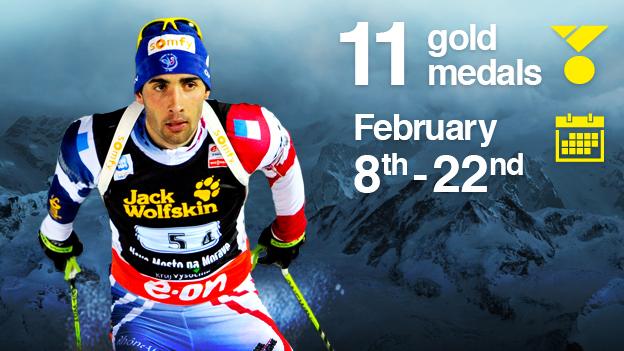Sochi 2014: A beginner's guide to the biathlon events
- Published

The sport in brief
Biathlon is the sweatiest sport at the Winter Olympics - male athletes typically produce 2.3m litres (four pints) of perspiration in the 20km race.
Across the 11 events, biathletes cover distances of between six and 20km, stopping at a shooting range either two or four times to fire at five targets - sometimes as small as golf balls - from 50m.
In the individual event, each miss results in a one-minute time penalty; in other events, a 150m penalty loop must be skied instead.
British prospects
Great Britain's two representatives, Lee Jackson and Olympic debutant Amanda Lightfoot, have no chance of a medal but finishing in the top half of the field would represent a creditable display.
Global gold-getters
France's Martin Fourcade leads this season's World Cup, while Olympic 20km champion Emil Hegle Svendsen won four world titles last year.
Fellow Norwegian Ole Einar Bjorndalen, 40, has 11 Winter Olympic medals - one shy of equalling the Games record.
Another Norwegian, Tora Berger, was the outstanding woman at last year's World Championships, winning six medals - four of them gold - and Norway are leading contenders for all three relay events.
What's new for Sochi 2014?
The mixed relay, featuring two women and two men, makes its Olympic debut.
That's good news for Norway, who have won the event at the last three World Championships.
Pub bore
Last year, Russia hosted and won the world's first international tank biathlon.
Crews had to hit targets - shaped as helicopters, tanks and houses - from distances of up to 2,200m.
The USA has been invited to compete at the next contest in the hope of easing tension between the former Cold War rivals.
Previous British medallists
Total: None
Highest position: 11th (Keith Oliver; men's individual 20km, 1972)
- Published8 January 2014
- Published31 January 2014
- Published23 January 2014